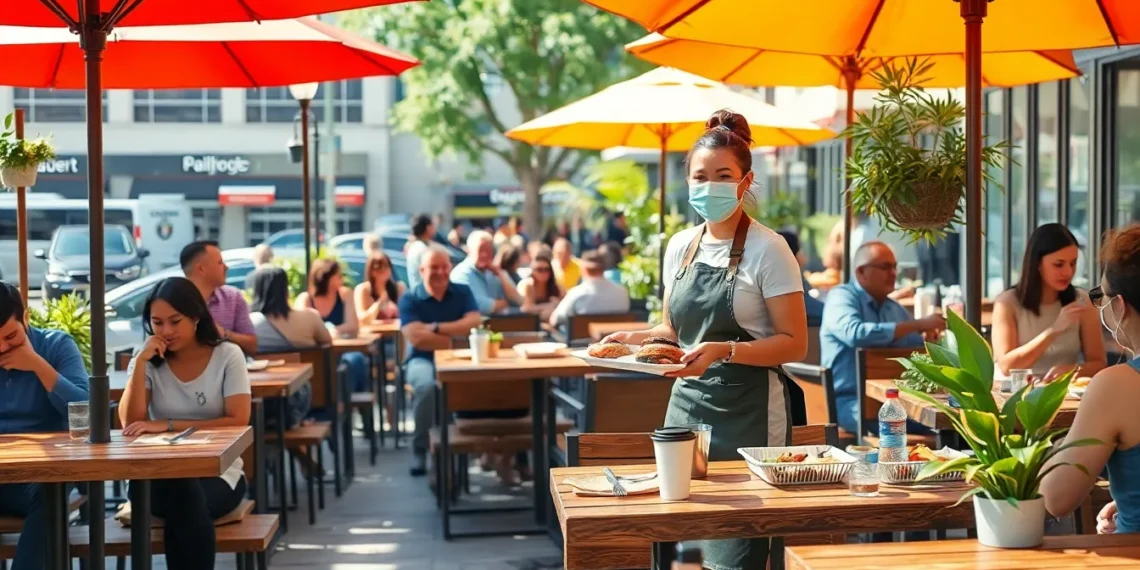The food and beverage industry has always been a feast for the senses, but COVID-19 served up a platter of challenges that no one saw coming. Suddenly, dining out felt like a distant memory, and takeout became the new normal. Restaurants and cafes scrambled to adapt, turning their menus into survival kits while juggling health guidelines like a circus act.
From supply chain disruptions to staffing shortages, the hurdles seemed endless. It’s like trying to make a gourmet meal with half the ingredients missing. Yet amid the chaos, creativity flourished as businesses pivoted to survive. They embraced delivery apps and innovative menus, proving that even during a pandemic, the show must go on. As they navigate this ever-changing landscape, one thing’s clear: the resilience of the food and beverage industry is as strong as a double shot of espresso.
Challenge Faced by the Food and Beverage Industry in View of COVID-19
The food and beverage industry encompasses a broad spectrum of businesses, including restaurants, cafes, bars, and food manufacturers. Growing consumer demands shape the landscape, influencing menu options and service styles. Market trends show a significant tilt toward healthier and sustainable options, as consumers become more health-conscious.
COVID-19 forced the industry to adapt quickly to unprecedented conditions. Many establishments implemented safety measures to protect customers and staff, altering their operations entirely. Takeout options surged, while dining capacity frequently fluctuated due to restrictions. Innovations emerged, such as online ordering systems and contactless payments, helping businesses maintain customer engagement.
Staffing challenges posed further difficulties. Many employees faced layoffs or reduced hours, leading to shortages that strained operational capacity. In response, businesses often sought to streamline their menus, focusing on high-demand items that ensured quicker preparation and service. This strategy also minimized food waste, aligning with shifting consumer preferences toward sustainability.
Grim statistics reveal that more than 110,000 restaurants permanently closed between March 2020 and December 2021. Despite these hardships, some businesses thrived by pivoting their models. Craft breweries started selling directly to consumers, while food trucks capitalized on flexible service locations.
The adaptability of the industry reveals its resilience. As businesses confronted ongoing challenges, they forged new paths forward. Trends continue toward e-commerce and home delivery, underscoring a lasting change in consumer behavior. As the world gradually recovers, the food and beverage industry shows potential for continued evolution.
Impact of COVID-19 on the Industry

COVID-19 significantly impacted the food and beverage industry, leading to numerous challenges. Businesses had to adapt rapidly to shifting consumer preferences and external pressures.
Supply Chain Disruptions
Supply chain disruptions affected sourcing and distribution. Inventory shortages for essential ingredients became common, forcing restaurants to limit menu items. Price fluctuations for basic supplies created further financial strain. With shipping delays also pervasive, many establishments faced difficulty in maintaining consistent offerings. These supply chain challenges led to increased competition for available resources. For instance, restaurants had to establish new relationships with local suppliers to ensure product availability. Adaptation strategies, including diversifying suppliers, became crucial for operational continuity.
Workforce Challenges
Workforce challenges also emerged prominently during this period. The pandemic prompted a significant wave of layoffs, leading to labor shortages in many sectors. Many employees left the industry due to health concerns or sought more stable job opportunities. Difficulties in hiring qualified staff compounded existing staffing issues. Restaurants experienced high turnover rates, impacting service quality and operational capacity. According to recent data, approximately 1 in 6 restaurant employees either lost their job or left the industry entirely. Some businesses implemented flexible scheduling and enhanced benefits to attract talent. Overall, the workforce situation strained operations and underscored the need for sustainable employment practices.
Changes in Consumer Behavior
The COVID-19 pandemic dramatically shifted consumer behavior in the food and beverage industry. A notable trend involves increased reliance on technology for ordering food.
Shift to Online Ordering
Many customers now prefer online ordering for convenience. Online platforms became essential for restaurants seeking to maintain revenue streams. With over 60% of consumers using third-party delivery apps, dining establishments adapted quickly by enhancing their digital presence. Visibility on social media platforms also grew, as restaurants showcased offerings to entice remote diners. It’s clear that customers appreciate the efficiency of contactless services, which provide safety alongside convenience. Adopting user-friendly online systems allowed establishments to cater to evolving consumer preferences effectively.
Increased Health Concerns
Heightened health concerns reshaped how individuals approach dining out and food safety. More consumers prioritize cleanliness and safety protocols at restaurants, influencing their choices significantly. Research indicates that 74% of diners seek establishments that emphasize hygiene measures. This focus on health prompted many businesses to implement strict sanitation practices, from staff training to regular deep cleaning. Awareness of ingredient sourcing also rose, with patrons increasingly favoring establishments that offer transparency regarding health and nutrition. Shifting preferences toward healthier menu options further underscore this trend, with many consumers opting for plant-based or organic choices amidst their heightened awareness.
Strategies for Adaptation
The food and beverage industry continues to implement diverse strategies in response to COVID-19 challenges. These adaptations highlight resilience and creativity amid persistent obstacles.
Innovative Business Models
Embracing new business models has become vital. Many establishments turned to direct-to-consumer sales, particularly craft breweries. Food trucks are leveraging their mobility by setting up at various locations, meeting customers where they are. Subscription meal services gained traction, catering to consumers requiring convenience and variety. Pop-up restaurants emerged as a creative solution, allowing chefs to showcase their culinary skills in temporary settings. These innovative approaches not only increased revenue streams but also fostered community connections.
Emphasis on Safety Protocols
Establishments prioritized safety protocols to instill consumer confidence. Over 74% of diners now favor restaurants that demonstrate strict hygiene measures. To ensure safety, many businesses implemented enhanced sanitation practices in all areas, from food prep to dining spaces. Staff members receive training on health protocols to minimize risks. Transparent communication about safety measures through signage and social media has proven essential. Recognizing growing health concerns, businesses adapted their layouts to allow for social distancing. Valuable trust builds when customers see commitment to their well-being.
Future Outlook
Anticipation surrounds the food and beverage industry as it adapts to a post-COVID-19 landscape. Increased consumer preference for healthy and sustainable options drives changes in menu offerings. E-commerce growth shapes how businesses interact with customers, making online presence vital for success. Strengthened safety measures remain a priority, with over 74% of diners faverring establishments that demonstrate strict hygiene protocols.
Heightened focus on technology usage continues, as businesses implement advanced online ordering systems and third-party delivery services. Restaurants invest in digital marketing strategies to engage customers and showcase offerings. Unique dining experiences gain traction, appealing to evolving consumer desires for more than just food.
Labor shortages necessitate creative staffing solutions, prompting restaurants to offer better benefits and flexible work arrangements. Many establishments expedite their hiring processes and enhance training programs to meet workforce demands. Reluctance to enter the service industry persists, leading to a focus on employee retention strategies.
Bold innovations emerge as direct-to-consumer models gain popularity, reflecting shifts in purchasing behavior. Optimizing supply chains becomes critical, with businesses forming new partnerships with local suppliers to secure essential ingredients. Increasing price sensitivity among consumers prompts restaurants to assess cost structures and streamline menus further.
Resilience shines through the industry’s evolution. Ongoing collaboration within the sector fosters community connections and encourages shared resources. By embracing these trends, the food and beverage industry adapts to emerging consumer expectations while navigating challenges.
Conclusion
The food and beverage industry has faced unprecedented challenges during the COVID-19 pandemic. Yet through innovation and adaptability, many businesses have found ways to thrive amid adversity. The shift in consumer preferences towards healthier options and the growing reliance on technology for ordering food have reshaped the landscape.
As the industry moves forward, embracing these changes will be crucial for long-term success. By prioritizing safety, enhancing digital engagement, and fostering community connections, businesses can position themselves to meet evolving consumer expectations. The resilience demonstrated during this crisis will likely serve as a foundation for future growth and transformation.















